LOCAL
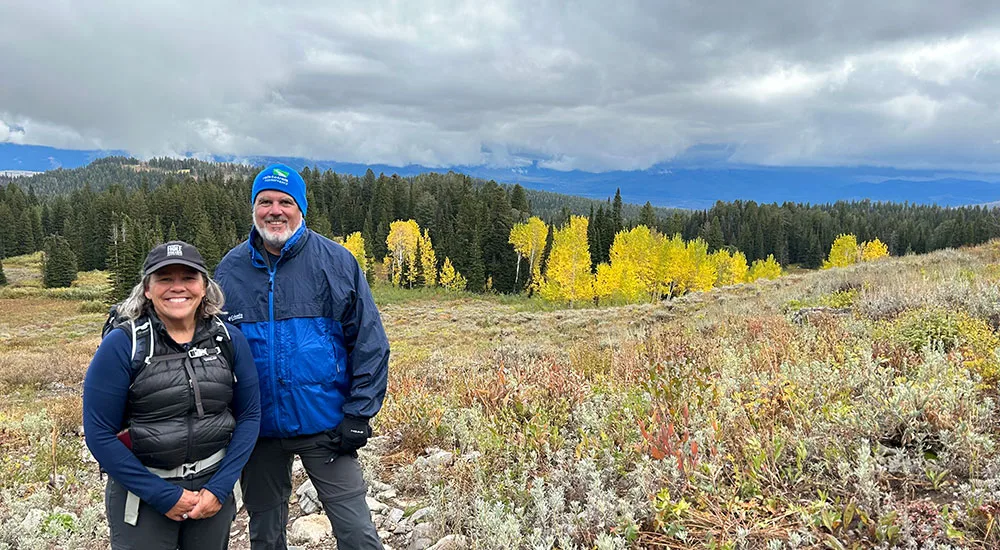
I think autumn is my favorite time of year in Jackson Hole. The weather can be spectacular and the shaded areas whisper winter with a chill in the air. Snow begins to fall in the high country but you can still access most hikes since it has yet to accumulate. Hiking is more comfortable with cooler temps and no bugs. The aspen and cottonwood trees are turning yellow and in the Snake River Canyon you can see vibrant red maples.
Fall colors seem a bit less vibrant than usual this year, but are still spectacular. Many folks have commented on how the leaves didn’t change color, they just turned brown and fell off. This is due to all the rain and moisture we had this summer. Aspen, and other poplars, are prone to a leaf fungus when it’s wet. As we end one of the coolest and wettest summers on record, it is not surprising that we are seeing this Aspen leaf blight. It usually does not kill the trees, but does weaken their defenses.
Learn more:
Aspen and Poplar Leaf Spots »
How to Combat Aspen Leaf Spots »
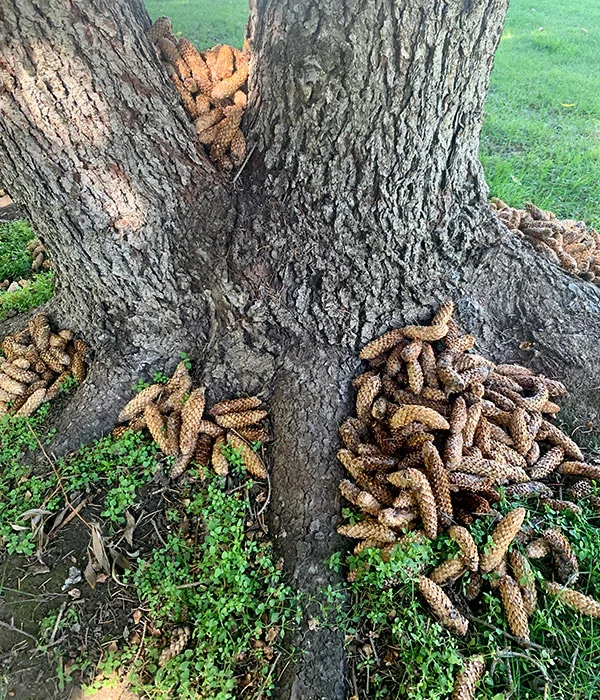
Animals are quite active this time of year, engaging in mating rituals and preparing for winter. The red squirrels in my neighborhood are busy gathering cones into middens which are their food supplies throughout the winter. The bull elk bugle and can be heard throughout the valley at the break of day or as the sun sets. A great places to listen is along the Moose-Wilson Road or Lupine Meadows. The meadows are filled with autumn colors and the views are majestic.
Enjoy this magical time of year as town begins to quiet and all beings prepare for winter.

Cathy Shill
Founder, The Hole Hiking Experience
REGIONAL
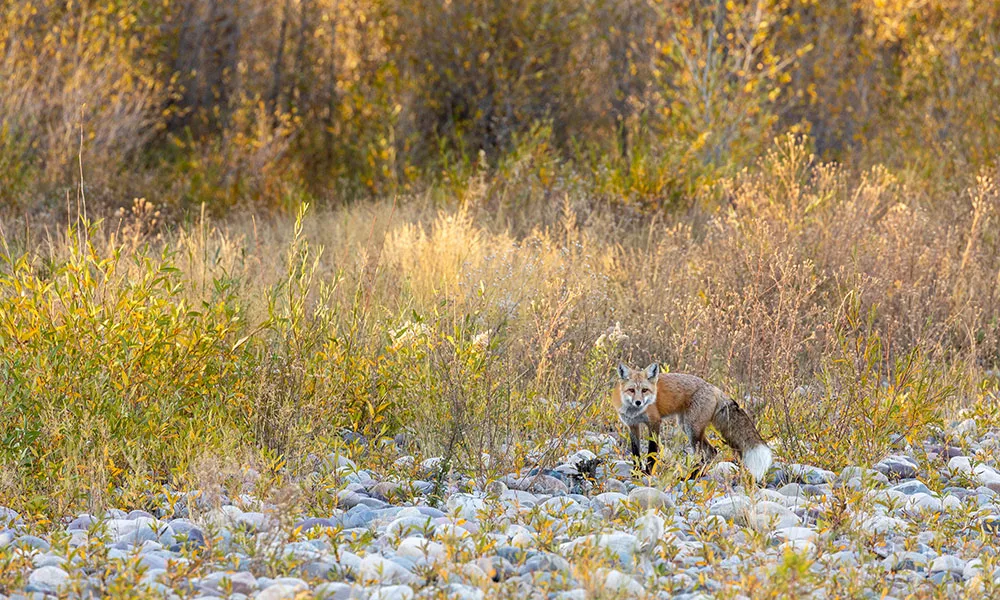
During the last few years, our guides have seen more red foxes in populated areas as we tour throughout the valley. We see them near homes along the Teton Village Road, at the base of Jackson Hole Mountain Resort, and near the Taggart Lake trail system in the winter.
There are nine subspecies of the red fox (Vulpes vulpes) in North America. Color varies but they usually have red fur and a white tip to their tail. Rodents are a main part of their diet, but they also take advantage of human foods. Fox do well in the winter as they listen for rodents burrowing in the snow and you may see them leaping vertically to get the right pounce.
While the red fox numbers are unknown, they have been more visible in recent years in Grand Teton National Park and wildlife biologist, John Stephenson, is taking a closer look.
Learn more: National Park Service Species Spotlight — Red Fox
SPIRIT
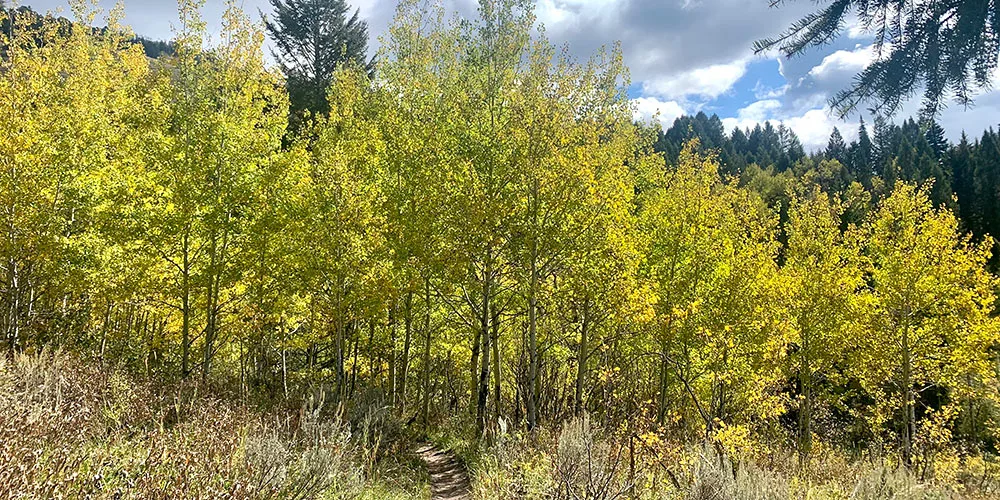
“Winter is an etching, spring a watercolor, summer an oil painting and autumn a mosaic of them all.”
— Stanley Horowitz
Field Facts
- Peak mating season is September and October so make sure to give wildlife space. Male animals can be more aggressive at this time of year.
- All animals are more active as they prepare for winter. Bears can roam in search of food so be extra vigilant with bear attractants.
- Change in the weather will get animals moving to winter territories so be extra vigilant when driving at night.
Backcountry Tips
- Wear orange when recreating on forest land. It’s hunting season.
- Uphill hikers have the right of way so those going downhill should yield by gently stepping off the trail.
- Bull elk bugle during mating season and fun to listen at dusk. You can hear them throughout the valley and in Yellowstone. Locally, it’s fun to sit and listen at the Lupine Meadow trailhead in Grand Teton Park.
Trail Suggestions
The pace of the valley changes in October making it a wonderful time to explore trails in Grand Teton National Park. You can connect the lakes on the Valley Trail or spend time hiking the Taggart/Bradley Lake loop. Bearpaw and Trapper lakes are longer walks near Leigh Lake. Running or walking around Jenny Lake is another accessible adventure. Remember to take bear spray while your are out enjoying the change of season.
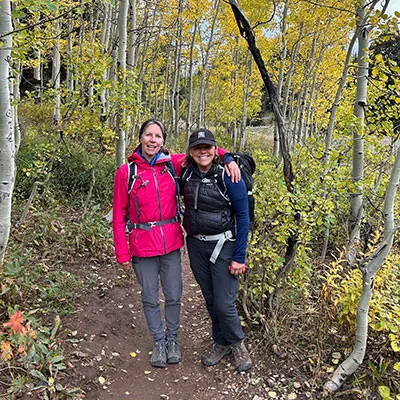
Join a naturalist on the trail
The Hole Hiking Experience Founder, Cathy Shill, enjoys sharing nature and meeting new folks. We will be hiking throughout the month of October.


